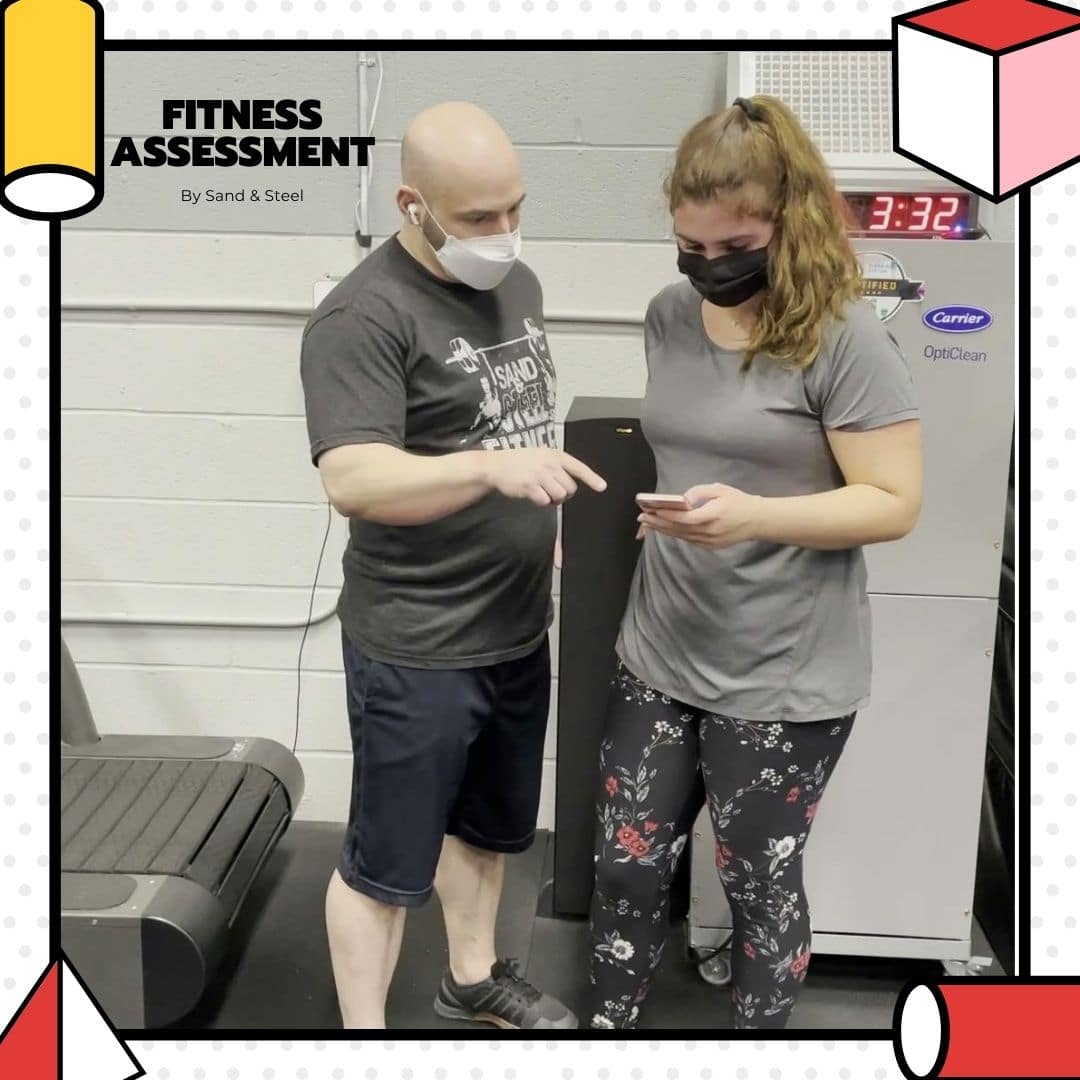The above playlist features 11 videos. The first video is the trailer, the second is some overview tips, videos 3-11 are tutorials on how to perform each video. We perform a fitness assessment to gather data. The data you collect consists of moving through ranges of motion, control, imbalances from left to right or upper to lower body, finding out current fitness level (beginner, intermediate, advanced, or expert). We collect this information because it provides us with current information and helps re-assess the client over time. The following fitness assessment is geared to strength and conditioning training here at Sand and Steel Fitness.
Fitness Assessment Exercises for Strength and Conditioning
Good Practices During the Fitness Assessment
For every exercise you perform, you need to look at it from multiple angles, meaning walking around the client to observe from all sides. Because what you do not see could be a potential problem in the future during training. As well as recording the complex exercise movements by doing this, you can show the client how they are moving during the exercise. Moreover, giving you a better opportunity to spot their faults. Whether the client is performing a bilateral or unilateral exercise, you need to pay attention to compensatory factors, especially if the client has had a previous injury. Lastly, everything you see, good or bad, should be relayed to the client to keep them fully informed of their fitness assessment.
Software Procedures
- Select those assessments that provide you the most information relative to a client’s goals.
- The purpose of the assessment is to determine the nature and extent of any preexisting injuries or weaknesses. So if you see a shaky exercise pattern, explore it further with additional tests.
- We have a Fitness Assessment track you can use as a template of the assessment exercises you should pick. You should assign the Fitness Assessment track to the client via SugarWOD and clone the Fitness Assessment to the current day. You aren’t limited to the exercises in the Fitness Assessment, you should choose the assessments from the assessment lists that will provide you with the most information.
- The member needs to put in a score and notes on every exercise in SugarWOD. The members opens SugarWOD on their phone and enter the information you tell them.
- After the session, on the same day as the assessment, the coach must open Zen Planner on desktop and update the below fields under Intake. It is the coach’s job to gather answers to all of these questions during the assessment. Use a notebook so you can record information. You can bill 15 minutes for typing in the answers to the below questions.
- Injuries and Mobility Limitations:
- Next Session Focus:
- Mobility Observations:
- Corrective Exercises:
- Programming Recommendation (Assessment):
- Workout Program:
- What is Your Fitness Level?:
